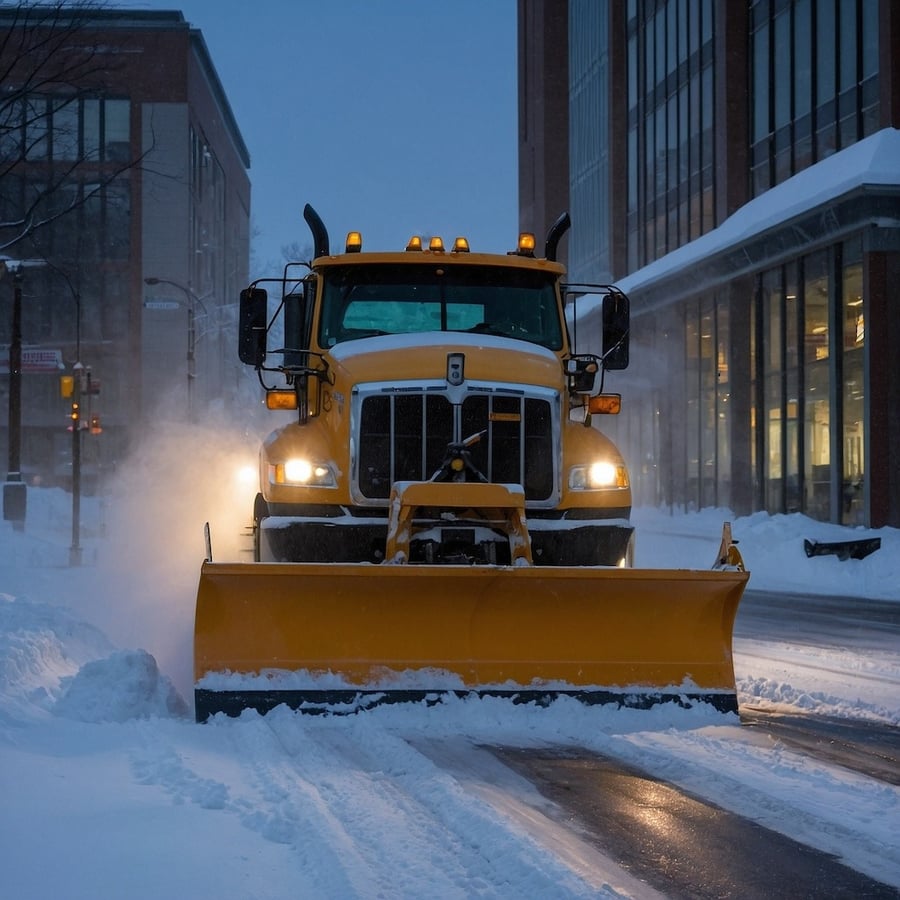Emergency Commercial Snow Removal: A Property Manager's Complete Guide

Trust me, after 25 years in the landscape design and property management business, I've seen my fair share of winter weather emergencies. Here's something most property managers learn the hard way: when it comes to commercial snow removal, being reactive instead of proactive is like trying to shovel your way out of an avalanche – it's overwhelming and potentially dangerous.
Today, I'm going to share everything you need to know about emergency commercial snow removal, from preparation strategies to execution, and most importantly, how to avoid those midnight panic calls during the season's first big storm.
Why Emergency Snow Removal Matters: More Than Just Clearing Paths
Let me tell you a quick story that really drives this home. Last winter, I got a frantic call from a property manager whose previous snow removal service had dropped the ball during a major storm. By the time they contacted us, they had already received two slip-and-fall incident reports and were facing potential liability issues. Want to know a landscaper's secret? The best emergency snow removal plan is one you never have to use.
Emergency snow removal for commercial properties isn't just about convenience – it's about:
- Legal liability protection and risk management
- Employee and customer safety assurance
- Business continuity during severe weather
- Property protection from snow and ice damage
Creating Your Emergency Snow Response Plan
Here's another thing I've learned the hard way: you can't create an effective snow response plan when there's already six inches on the ground. Let's break down the essential elements of a solid emergency snow removal strategy.
Pre-Season Planning
Think of your pre-season snow removal plan like a football playbook – you need to know exactly who's doing what before the game starts. Here's what should be in your playbook:
- Property analysis and snow storage area designation
- Equipment and material stockpile assessment
- Communication protocols for different weather scenarios
- Trigger points for service deployment
The Three Pillars of Effective Emergency Snow Management
1. Prevention and Preparation
Remember what I always tell my clients: an ounce of prevention is worth a pound of salt (and yes, I mean that literally in snow removal). Your prevention strategy should include:
- Regular weather monitoring and alert systems
- Pre-treatment of surfaces before storms
- Clear documentation of service areas and priorities
- Staff training and emergency response protocols
2. Response and Execution
When the snow starts falling, you need a clear action plan. Here's what works best based on my experience:
- Staged deployment based on accumulation levels
- Priority-based clearing sequences
- Real-time communication systems
- Documentation of all services performed
3. Recovery and Documentation
The job isn't done when the snow stops falling. Post-storm activities should include:
- Property inspection for damage or remaining hazards
- Service documentation and photo evidence
- Client communication and satisfaction confirmation
- Team debriefing and process improvement discussions
Equipment and Resources: What You Really Need
Here's a fun trick I learned over the years: it's not about having the most equipment – it's about having the right equipment for your specific needs. Essential resources include:
- Commercial-grade snow plows and pushers
- Ice management materials and spreaders
- Backup equipment and emergency repair kits
- Mobile communication devices and GPS tracking
Common Emergency Snow Removal Mistakes to Avoid
Trust me, I've seen this mistake more times than I've trimmed hedges: waiting until the forecast shows a storm before securing snow removal services. Here are the top mistakes to avoid:
- Inadequate pre-season preparation
- Poor communication protocols
- Insufficient equipment maintenance
- Reactive instead of proactive response
Developing a Winter Weather Communication Strategy
Let me share another landscaper's secret: the best snow removal service in the world won't help if you can't communicate effectively with your stakeholders. Your communication plan should include:
- Clear service trigger points and response times
- Multiple contact methods for key personnel
- Regular updates during storm events
- Post-service reporting and documentation
Making the Decision: In-House vs. Professional Snow Removal
Here's something I always tell my commercial clients: snow removal is like performing surgery – you want someone who does it professionally, not someone who watched a YouTube video about it. Consider these factors:
- Equipment investment and maintenance costs
- Staff availability and training requirements
- Insurance and liability considerations
- Response time capabilities
The Future of Commercial Snow Removal
Want to know what's really exciting in our industry? The integration of technology is revolutionizing how we handle emergency snow removal. Here's what's changing the game:
- GPS-guided plowing systems
- Real-time weather monitoring and response
- Mobile app-based service tracking
- Environmentally friendly de-icing solutions
Conclusion: Preparing for Winter Success
Remember, when it comes to emergency commercial snow removal, the key is being prepared before the first snowflake falls. Think of your snow removal strategy like a well-maintained landscape – it requires planning, attention to detail, and regular maintenance to truly shine.
As someone who's spent countless winter nights ensuring commercial properties stay safe and accessible, I can tell you that the investment in proper emergency snow removal planning pays for itself many times over. Don't wait for the forecast to turn threatening – start your winter weather preparation today.



